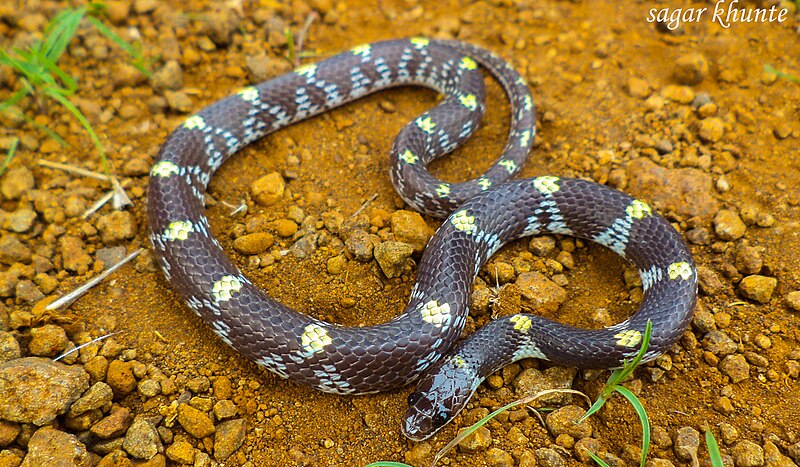Snakes are fascinating creatures with a wide range of physical characteristics that make them unique among reptiles
Snakes. Just the mention of these slithery creatures can send shivers down some spines, while others are filled with awe and curiosity. Whether you’re a curious homeowner who stumbled upon a garden snake or an amateur herpetologist fascinated by reptilian wonders, snakes’ physical characteristics are nothing short of extraordinary. From their mesmerizing scales to their limbless bodies, each trait serves a purpose in the grand tapestry of nature.
In this article, we’ll dive deep into the world of snake anatomy, exploring everything from their unique body structures to the remarkable adaptations that make them such successful survivors. You’ll learn about the differences in physical traits among various species and how these characteristics aid in their daily lives, whether they’re hunting, hiding, or defending themselves.
Key Takeaways:
- Overview of snake body structures
- Unique adaptations of snakes
- Differences in physical traits among snake species
- How these characteristics aid in their survival and behavior
An Overview of Snake Body Structures
Head
The head of a snake is more than just a container for its brain and sensory organs; it’s a marvel of evolutionary adaptation. Snake heads come in various shapes and sizes, each tailored to their environment and hunting style. For instance, a pit viper has heat-sensing pits between its eyes and nostrils, allowing it to detect warm-blooded prey even in the dark. Meanwhile, a snake’s eyes are adapted for excellent vision, some with elliptical pupils for night hunting and others with round pupils for daytime activity. Their forked tongues, constantly flicking in and out, pick up scent particles, guiding them to food or away from danger.
Scales
A snake’s scales are not just for show; they serve multiple critical functions. These scales, which can be smooth or keeled (ridged), protect their skin from injury, aid in movement, and even help with moisture retention. Some snakes have iridescent scales that reflect light, creating a dazzling display that can confuse predators or attract mates. Each scale overlaps slightly with the next, providing a flexible armor that allows the snake to move gracefully across various terrains.
Skeleton
One of the most fascinating aspects of snake anatomy is their skeletal structure. Snakes have an incredibly flexible spine made up of hundreds of vertebrae, each with a pair of ribs attached. This flexibility allows them to perform their iconic slithering motion and enables them to coil tightly around prey or objects. Despite lacking limbs, snakes can move efficiently thanks to their ribs and muscles working in concert to push against surfaces. Their skulls are also highly specialized, with loosely connected bones that enable them to swallow prey much larger than their head.
Snakes are living proof that sometimes, less is more. Their streamlined bodies, devoid of limbs but equipped with a suite of unique adaptations, are a testament to nature’s ingenuity. As we continue, we’ll explore even more remarkable features that make these reptiles such fascinating creatures.

Unique Adaptations of Snakes
Venomous vs. Non-venomous
One of the most striking adaptations among snakes is the presence or absence of venom. Venomous snakes, like vipers and cobras, possess specialized glands and fangs that deliver venom to subdue their prey or defend against threats. These fangs can be long and hollow, allowing venom to be injected deep into the prey, or they can be shorter with grooves that channel venom along the teeth. On the other hand, non-venomous snakes, such as pythons and garter snakes, rely on constriction or quick strikes to capture and kill their prey. Their physical traits, such as muscular bodies for constriction or quick reflexes for striking, are just as effective in their survival.
Camouflage and Coloration
Snakes are masters of disguise, and their coloration plays a crucial role in their ability to blend into their environments. Many snakes have developed colors and patterns that mimic their surroundings, allowing them to avoid predators and surprise their prey. For example, the green tree python’s vibrant green scales blend seamlessly with the foliage of its arboreal habitat, while the sandy hues of a desert-dwelling rattlesnake make it nearly invisible against the backdrop of the desert floor. Some snakes also exhibit aposematic coloration, with bright, contrasting patterns that warn predators of their venomous nature, like the coral snake’s vivid red, yellow, and black bands.
Heat Sensing
Some snakes have developed a heat-sensing ability that gives them a distinct advantage, especially in hunting warm-blooded prey. Pit vipers, boas, and pythons possess specialized pits located between their eyes and nostrils that can detect infrared radiation. These heat-sensing pits allow them to “see” the heat emitted by their prey, effectively turning them into living thermal cameras. This adaptation is particularly useful for nocturnal hunters, allowing them to locate prey even in complete darkness.
Snakes’ unique adaptations are marvels of evolution, each serving a specific function that enhances their survival in a wide range of environments. These features, from venom to camouflage to heat sensing, illustrate the incredible diversity and specialization within the snake world. As we delve deeper, we’ll uncover the differences in physical traits among various snake species and how these differences reflect their ecological niches.
Differences in Physical Traits Among Snake Species
Size Variations
Snakes exhibit an impressive range of sizes, from the tiny thread snake, which can be as small as a few inches, to the enormous anaconda, which can grow over 20 feet long. These size differences are more than just curiosities; they are adaptations to specific ecological niches. Smaller snakes, like the thread snake, often burrow and live in tight spaces, feeding on small insects and larvae. In contrast, large snakes like anacondas and reticulated pythons dominate their environments, preying on much larger animals, including mammals, birds, and even other reptiles. This vast size range among snake species highlights the incredible adaptability and evolutionary success of these reptiles.
Habitat Influence
The habitat a snake lives in significantly influences its physical characteristics. Arboreal snakes, which spend most of their lives in trees, tend to have longer, more slender bodies and prehensile tails to aid in climbing and navigating the forest canopy. Examples include the green tree python and the boomslang. Aquatic snakes, like sea snakes, have streamlined bodies and flattened tails that enable them to swim efficiently. Their nostrils are often located on top of their snouts, allowing them to breathe while mostly submerged. On the other hand, burrowing snakes, such as sand boas and blind snakes, have shorter, more robust bodies and reduced eyes, perfect for a life spent underground.
Behavioral Adaptations
Physical traits in snakes are often closely tied to their behaviors and survival strategies. For example, rattlesnakes have developed a rattle at the end of their tails, which they use as a warning signal to potential threats. This distinctive adaptation serves to deter predators without the need for a physical confrontation. Another fascinating example is the hood of a cobra, which it flares when threatened to appear larger and more intimidating. Additionally, snakes like the hognose snake exhibit dramatic behavioral displays, such as playing dead, to avoid predation. These behavioral adaptations, supported by their physical traits, demonstrate the complex interplay between a snake’s anatomy and its survival strategies.
The diversity in physical traits among snake species is a testament to their adaptability and evolutionary success. From size and habitat adaptations to specialized behaviors, these differences enable snakes to thrive in a variety of environments. As we explore further, we’ll see how these unique characteristics aid in their survival and daily behaviors, giving us a deeper appreciation for these remarkable reptiles.
How Physical Characteristics Aid in Survival and Behavior
Hunting and Feeding
Snakes are formidable hunters, and their physical characteristics play a crucial role in their hunting strategies and feeding habits. One of the most impressive adaptations is the flexibility of their jaws. Unlike humans, snakes have highly flexible ligaments in their jaws, allowing them to open their mouths extraordinarily wide and swallow prey much larger than their heads. This adaptation is essential for snakes like pythons and boas, which constrict and consume large animals. Venomous snakes, on the other hand, use their specialized fangs to inject venom into their prey, quickly immobilizing them and starting the digestive process even before swallowing. This combination of jaw flexibility and venomous fangs makes snakes highly efficient predators.
Defense Mechanisms
In the wild, survival often hinges on a snake’s ability to defend itself. Snakes have developed a variety of physical traits to deter predators and protect themselves. Some snakes, like the rattlesnake, use their rattling tails as an audible warning to potential threats, signaling that they are not to be trifled with. Others, such as the hognose snake, exhibit dramatic defensive behaviors, including playing dead and emitting foul smells to discourage predators. Additionally, many snakes have developed cryptic coloration that allows them to blend seamlessly into their environments, making them nearly invisible to both predators and prey. These defense mechanisms are vital for their survival in the wild.
Reproduction
The reproductive strategies of snakes are as diverse as their physical traits. Some snakes lay eggs, while others give birth to live young. Egg-laying snakes, like the king cobra, often exhibit unique adaptations for protecting their eggs. For instance, female king cobras build nests and guard their eggs until they hatch, an unusual behavior among snakes. Live-bearing snakes, such as many species of vipers, have developed physiological adaptations to nourish their developing young internally. These reproductive strategies, supported by specific physical characteristics, ensure the continuation of their species and adaptation to their environments.
The physical characteristics of snakes are intricately linked to their survival and behavior. Whether hunting, defending themselves, or reproducing, these traits provide the tools they need to thrive in their respective habitats. Understanding these characteristics not only highlights the incredible adaptability of snakes but also fosters a greater appreciation for their role in the natural world.
Conclusion
Snakes are truly remarkable creatures, each equipped with a suite of physical characteristics that make them uniquely suited to their environments. From the flexible jaws that allow them to consume prey much larger than their heads, to the specialized scales and coloration that provide protection and camouflage, snakes have evolved a fascinating array of adaptations that aid in their survival.
As we’ve explored, the differences in physical traits among various snake species highlight the incredible diversity within this reptilian order. Whether they are hunting, defending themselves, or reproducing, each physical trait serves a specific function, showcasing nature’s ingenuity in designing these efficient and effective survivors.
By understanding these unique characteristics, we not only gain a deeper appreciation for snakes but also recognize their important role in the ecosystem. So, the next time you encounter a snake, take a moment to marvel at the evolutionary marvels that make these reptiles so captivating. Embrace the wonder of their adaptations and the role they play in the intricate web of life.














